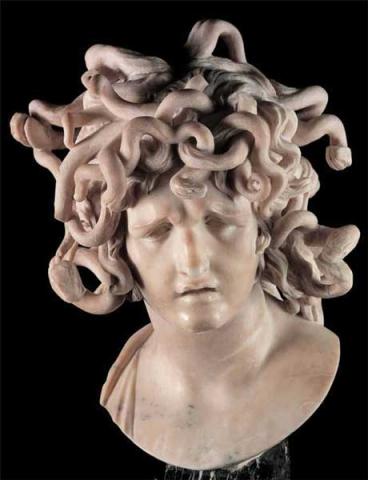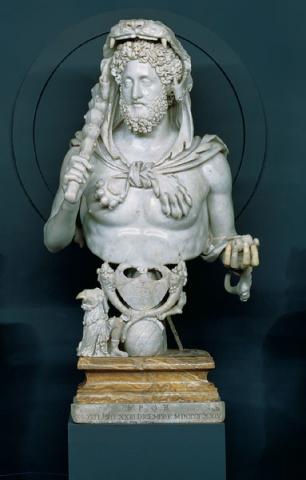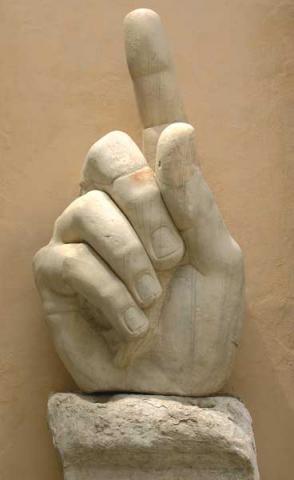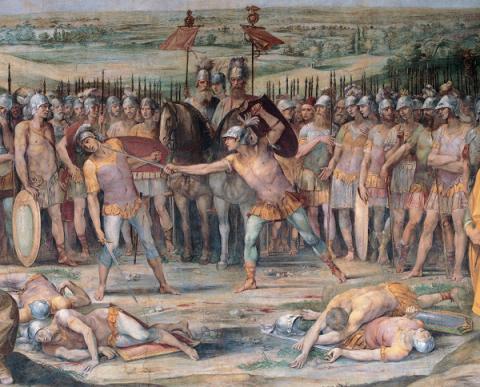Palazzo Senatorio
Palazzo Senatorio has been the seat of the Municipality of Rome since 1143, when the ‘ Renovatio Senatus’ (renewal of the Senate) was decreed, that is to say, the foundation of the medieval Roman municipality. In the Palace the Senators, the courts that were responsible for the administration of justice and the city, used to meet
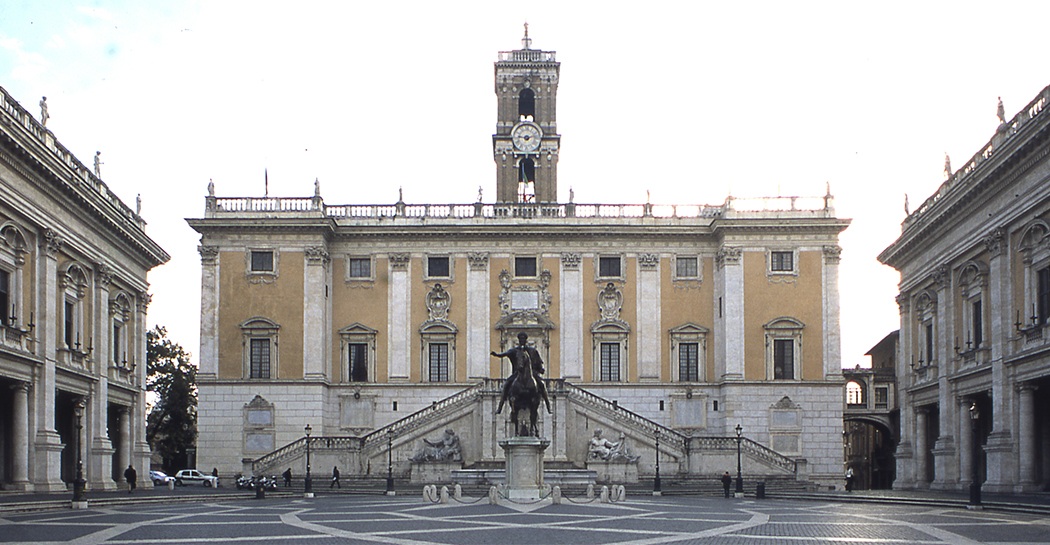
After the ancient age when the Capitoline Hill was mainly the religious centre of Romanity (with the Temple of Capitoline Jupiter), it was in the Middle Ages that the Hill acquired its current institutional importance, so much so that the term Capitoline Hill is still today, in the western world, synonymous with the focus of the public power.
The Palace contains the most ancient remains of a city hall that have survived until today. The first part of the building was built on the ruins of the Tabularium, the public archive of ancient Rome, and then, as it expanded, it occupied the area of the nearby Temple of Veiove.
The most ancient municipal seat is also traditionally identified as part of the present-day Gallery of Sixtus IV, a two-aisled hall accessed from the representative entrance of the same name, renovated by the Pope in 1477.
About a century after the founding of the Municipality, an extensive renovation of the Palace took place, giving it an L-plan, with the façade facing the Piazza and an extension towards the Roman Forum on the side facing the Aracoeli. Among the new rooms is the Hall on the first floor, where the Senator administered justice, originally open towards the Piazza with round arches. The Chamber probably housed the statuary group of Charles I of Anjou, attributed to Arnolfo di Cambio, now in the Capitoline Museums. The room was accessible from the Piazza through a cordonade, where the sculptural group of the Lion Landing the Horse was located, the place where death sentences were read (and sometimes carried out).
There was also an upper hall, where the Senator would give audiences and the General Council would meet, characterised by a smaller loggia, and later joined to the lower hall in the present Julius Caesar Hall.
Looking at the façade from the square, on the right side of the palace was perhaps the bell tower. On the same side, at the end of the 14th century Pope Boniface IX had the openings plugged and two buttresses built to fortify the structure, but also as a symbolic gesture aimed at nullifying the image of municipal power. On the left side of the façade, the tower of Martin V (c. 1427) and, towards the Roman Forum, that of Nicholas V (1451) were added.
With Paul III Farnese, the Renaissance phase of the Palazzo Senatorio and the Campidoglio began. In 1537, the pope entrusted Michelangelo with the task of redefining the Piazza and the pre-existing buildings. The façade of Palazzo Senatorio was modified and completed only between 1593 and 1598. It is characterised by an ashlar base in faux travertine on which the elevation is set, marked by a giant order of pilasters and Corinthian capitals that connect to the cornice with balustrade and statues.
Con Paolo III Farnese inizia la fase rinascimentale del Palazzo Senatorio e del Campidoglio. Nel 1537, il papa affidò a Michelangelo il compito di ridefinire la piazza e gli edifici preesistenti. La facciata di Palazzo Senatorio fu modificata e completata solo tra il 1593 e il 1598. È caratterizzata da un basamento bugnato in finto travertino su cui si imposta il prospetto, scandito da un ordine gigante di lesene e capitelli corinzi che si collegano al cornicione con balaustra e statue.
The great 16th-century bell tower towering over Palazzo Senatorio was designed by Martino Longhi the Elder and has a brick elevation articulated in three superimposed orders, with the bell cells opening into the two main floors, where two large bells cast in 1804 and 1805 are still preserved. The clock, once on the façade of Santa Maria in Aracoeli, was moved to the main front of the Tower in 1806. At the top was an ancient female statue restored in the late 19th century as Minerva-Roma, now replaced by a cast.
THE REPRODUCTION OF THE CAPITOLINE SHE-WOLF
Near the second entrance there is a column with an Ionic capital surmounted by a smaller-scale reproduction of the famous statue of the Capitoline She-wolf, the latter originally kept on the façade of the Palazzo dei Conservatori, and later moved inside where it is still located today.
The She-wolf has been reproduced over the centuries in countless examples and with every artistic technique. In the 1930s, in particular, a series of bronze Capitoline She-wolves were produced by the Governorate of Rome that were perfectly faithful to the original. They were made using galvanoplasty, a technique discovered around the 1930s that is capable of reproducing objects with the utmost fidelity. The She-wolf placed at the entrance to Palazzo Senatorio belongs to this production, while other specimens were used as gifts from Rome to Italian and foreign cities as a sign of mutual friendship.


























